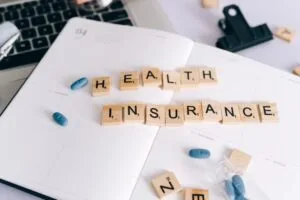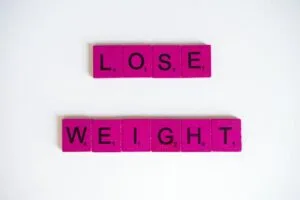Did you know that back pain is the second most common type of injury sustained in car accidents?
Even with seats designed to absorb the shock of impact, you might still experience a significant amount of pain with a car accident. What can you do to ease the extra pain and get back to normal?
If you’ve recently been in an accident, you need help to get better. Check out what you can do about back pain after a car accident.
Check Back Pain Symptoms
Evaluating such pain can be difficult since back pain can range from mild pain to disabling pain. Symptoms of back pain may include constant and dull discomfort and sharp pain.
Some also experience shooting pains that radiate to their arms or legs, and difficulty moving or range of motion. The pain could worsen over time due to inflammation or trauma to the muscles and tissues. After an accident, be mindful of any areas of the back that feel tender or in pain.
Take note of any sensations like burning, tingling, or numbness. It is also important to note if the pain is radiating to other parts of the body. When the accident is reported to the insurance provider, be sure to include a description of the back pain symptoms in the report.
After the accident, seek immediate medical attention to diagnose and assess the severity of your back pain. It is also essential to follow up with the prescribed plan of care after the initial visit.
Identifying the Underlying Cause
The severity of the pain, range of motion, and other symptoms can be indicators of the cause. It is important to seek medical attention so that a professional can diagnose and treat the cause. To identify the underlying cause of back pain, an examination by a medical provider is necessary.
This usually includes a physical exam, imaging studies such as an X-ray or MRI, and other diagnostic testing if indicated. Besides physical trauma, psychological trauma can often lead to chronic pain. Finding the underlying cause is essential for treatment to be effective.
Treating Back Pain After a Car Accident
With some understanding and the right treatment, your back pain doesn’t have to be a constant reminder of your car accident. Here are some tips to help you treat your back pain from a car accident and get you back in the driver’s seat:
Take Note of Proper Posture to Ease Pain
Sit with a straight back, feet planted on the ground, and shoulders back. When standing, one should ensure that the weight is evenly balanced on the feet and the ankles, specifically not shifting to one side or leaning forward.
Practicing good posture is more comfortable over time. It also provides support for any injured or weakened areas of the back that can be a result of the accident.
Those easing back pain might try utilizing a lumbar support cushion. It can also help maintain correct spinal alignment and comfort while sitting.
Use Ice and Heat Therapy
Heat therapy can help relax tense muscles in the back, allowing them to heal more. Cold therapy is best used in the immediate aftermath of the accident to reduce swelling in the affected area.
This should alternate with heat and cold treatments as needed. Heat can also help in cases where the pain has become more intermittent.
Heat therapy helps to promote better blood circulation to the area, allowing it to heal faster. Ice and heat therapy provides the best relief for post-accident back pain.
Take Proper Medications for Pain Management
Certain medications can help to reduce inflammation, muscle spasms, and pain. The best choice of medication for a particular individual depends on many factors, including the level of back injury, age, and health.
Common medications used in treating back pain after a car accident include non-steroidal anti-inflammatory drugs (NSAIDs). Some patients may also enjoy a short-term prescription for an opiate pain reliever.
Medications must be taken as directed by a physician. Staying active in physical therapy and other modalities of pain management available from a healthcare provider.
Go for Professional Massage Therapy for Relief
Massage therapy reduces stress and helps to relax the mind and body. It also stimulates endorphins which work to reduce pain while helping with relaxation.
It also can help the healing process of any injuries that were sustained as a result of the car accident. Massage therapy is also great for other types of pain, from chronic to acute for back pain relief.
Reducing tension and relaxing the muscles can help relieve pain in the lower back, neck, and even the legs. Professional massage therapy can also help to improve circulation and movement, as well as increase flexibility.
Follow Nutritional Guidelines to Promote Healing
Consume a balanced diet with plenty of fresh fruits and vegetables, whole grains, lean proteins, and healthy fats. Avoid processed, fried, and sugary foods that are low in nutrition.
Eat more antioxidant-rich foods like garlic, spinach, nuts, and berries. Avoid inflammatory foods such as processed meats, raw tomatoes, and red meat.
Increase intake of omega-3 fatty acids found in fish, walnuts, and flax seeds. Drink lots of water, dehydration delays healing and worsens inflammation.
Seek Out a Professional Chiropractor
A chiropractor is a specialist trained to diagnose and treat musculoskeletal issues. See a chiropractor that will work with you to develop a holistic treatment plan to reduce your back pain.
The chiropractor may recommend exercises, manual adjustments, massage therapy, or a combination of treatments. But it is depending on the severity of your back pain and the type of accident.
For instance, Waterside Chiropractic offers a range of services to help treat these types of conditions. It includes spinal change, massage therapy, and postural correction.
Ultimate Guide You Can Do About Back Pain After a Car Accident
Back pain as a result of a car accident should be taken seriously and managed as best possible. The article outlined ways to manage back pain after a car accident.
It is important to seek medical advice as soon as possible to cut pain and prevent injury. Take action now and talk to your physician to start finding the best treatment plan for you.
Are you looking for more tips? Take a look through our articles to find more helpful guides.









